Difference between plagiocephaly and brachycephaly
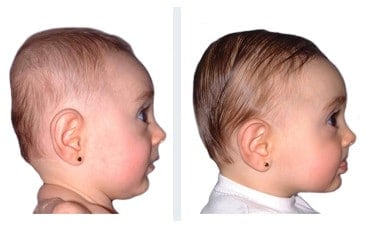
“Flat head syndrome” is a name often used to describe plagiocephaly and brachycephaly , and less likely, scaphocephaly. On this occasion, we want to focus on brachycephaly, since it differs from plagiocephaly and it is good to be clear about what differentiates them.
Brachycephaly, as we have already discussed, is a cranial deformity that is diagnosed when the back of a baby’s head is symmetrically flattened.
One of the main causes of appearance is when the little one remains asleep on his back for a long time . His forehead appears shorter than normal, his ears may protrude to either side, and his face may also be wider than usual. If the width of the skull (from ear to ear) exceeds 81% of the length from forehead to nape, a case of brachycephaly is confirmed.
To prevent it, it may be enough to reposition the baby and put him on his side while he sleeps so as not to exert too much pressure on the back. Additionally, the he tummy time guide can helpful for that purposes although at the first indication that an infant has a different head shape, a specialist should be consulted.
Both plagiocephaly and brachycephaly can be corrected if diagnosed early. At first, repositioning is usually enough, however, in more severe cases and if the sixth month is exceeded, the DOC Band® treatment , an orthopedic helmet that corrects the problem effectively, is the most widely used around the world.
Differences between Plagiocephaly and Brachycephaly
This is what brachycephaly looks like:
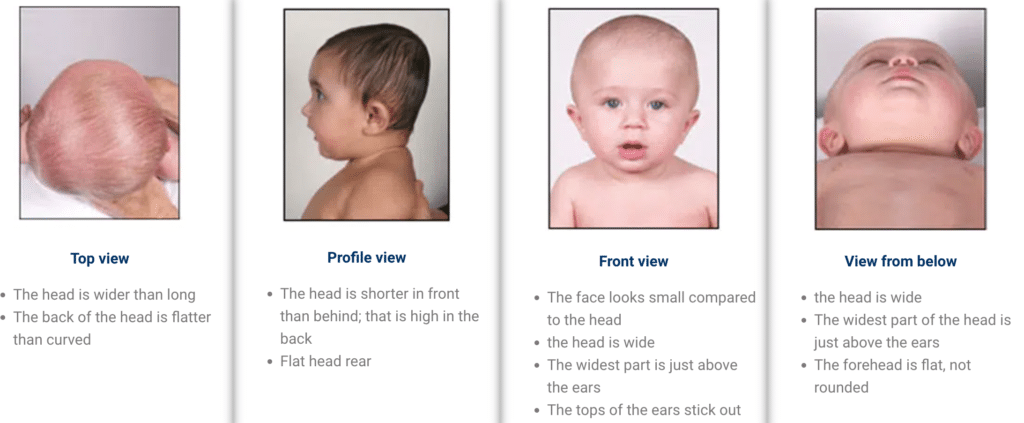
and this is what plagiocephaly looks like:
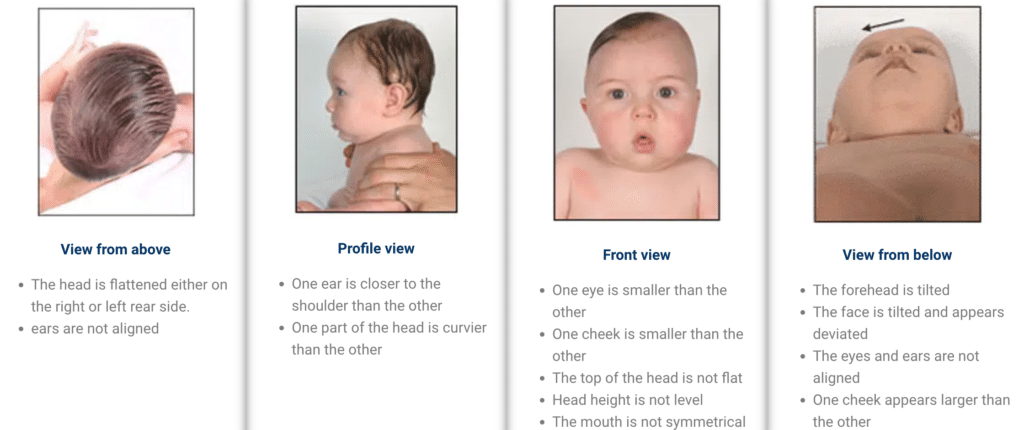
In terms of severity of brachycephaly, a profile view of the head can help you with the assessment:
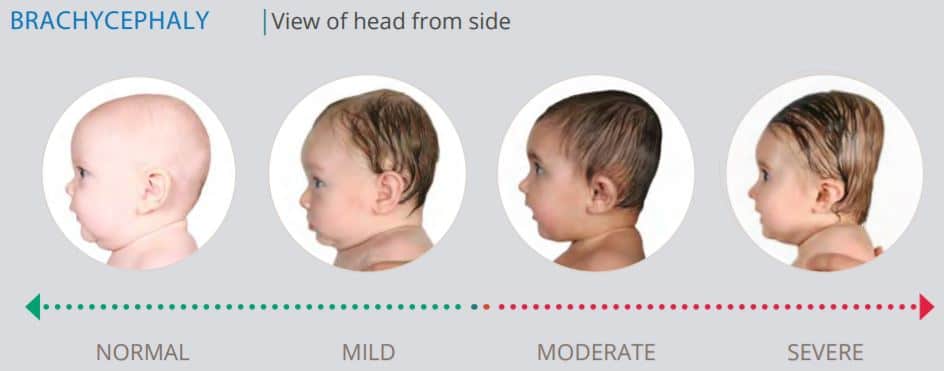
for the plagiocephaly, its severity can vie assessed by looking the head from above:
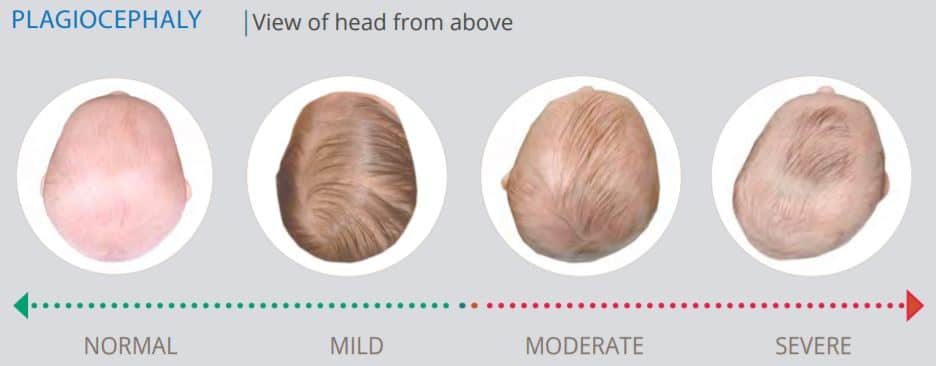
To differentiate both deformations, it is enough to make a series of measurements on the infant’s skull. In the case of plagiocephaly, the level of asymmetry of the skull must be determined , in brachycephaly the head is measured from ear to ear and from forehead to neck, since the deformation is more or less symmetrical.
Brachycephaly causes a nearly symmetrical flattening of the back of a child’s skull, often leading to an exaggerated height at the back of the skull and perhaps also an altered shape of the forehead.
If you still have questions, the following guide can help you assess the skull deformity your child may suffer.
As we always say, before any change in the position of your child’s head, go to a specialist doctor to correct any problem. There is a solution, but caution must be exercised.
For more information on therapies for treatment , the extensive professional experience of our team (more than 35 years and over 4.000 cases treated successfully), or any information about cranial malformations , do not hesitate to contact our centers .

